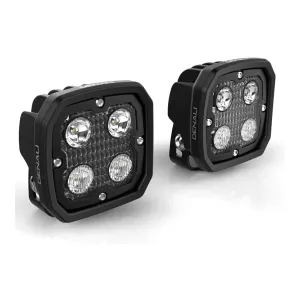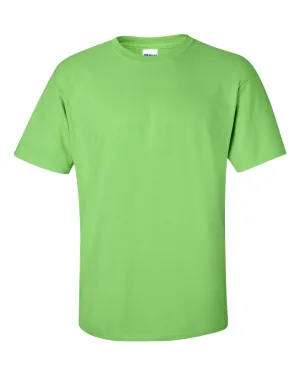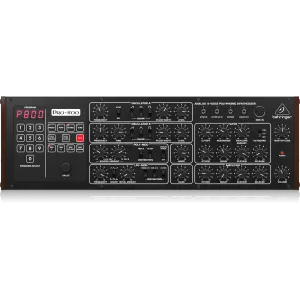Siren is one of our favorite Roxy albums, right up there with the first album and well ahead of the commercially appealing Avalon. After reading a rave review in Rolling Stone of the album back in 1975, I took the plunge, bought a copy at my local Tower Records and instantly fell in love with it.
As is my wont, I then proceeded to work my way through their earlier catalog, which was quite an adventure. It takes scores of plays to understand where the band is coming from on the early albums and what it is they're trying to do.
Now I listen to each of the first five releases on a regular basis. Even after more than forty years, the band's music never seems to get old.
That seems to be true of a lot of the records from the era that we offer on our site. Otherwise, how on earth could we possibly charge so much money for them?
What The Best Sides Of Siren Have To Offer Is Not Hard To Hear
- The biggest, most immediate staging in the largest acoustic space
- The most Tubey Magic, without which you have almost nothing. CDs give you clean and clear. Only the best vintage vinyl pressings offer the kind of Tubey Magic that was on the tapes in
- Tight, note-like, rich, full-bodied bass, with the correct amount of weight down low
- Natural tonality in the midrange -- with all the instruments having the correct timbre
- Transparency and resolution, critical to hearing into the three-dimensional studio space
No doubt there's more but we hope that should do for now. Playing the record is the only way to hear all of the qualities we discuss above, and playing the best pressings against a pile of other copies under rigorously controlled conditions is the only way to find a pressing that sounds as good as this one does.
The Best Copies Rock
The best copies are fairly transparent and mostly grain-free, with full-bodied vocals and lively sound. There are lots of "spacey" effects on side one, and "spacey" effects rather unsurprisingly need lots of space within which to operate, so the more open the pressing, and the more ambience-resolving it is, the better, as long as it's tonally correct: neither bright nor thin.
Of all the Roxy albums (with the exception of Avalon) this is probably the best way "in" to the band's music. The earlier albums are more raucous, the later ones are more rhythmically driven -- Siren catches them at their peak, with, as other reviewers have noted, all good songs and no bad ones.
What We're Listening For on Siren
- Energy for starters. What could be more important than the life of the music?
- The Big Sound comes next -- wall to wall, lots of depth, huge space, three-dimensionality, all that sort of thing.
- Then transient information -- fast, clear, sharp attacks, not the smear and thickness common to most LPs.
- Tight, note-like bass with clear fingering -- which ties in with good transient information, as well as the issue of frequency extension further down.
- Next: transparency -- the quality that allows you to hear deep into the soundfield, showing you the space and air around all the players.
- Then: presence and immediacy. The vocals aren't "back there" somewhere, way behind the speakers. They're front and center where any recording engineer worth his salt -- in the case -- would have put them.
- Extend the top and bottom and voila, you have The Real Thing -- an honest to goodness Hot Stamper.
Imports? Not So Fast
The British and German copies of Siren are clearly made from dubbed tapes and sound smeary, small and lifeless.
To be fair, Siren has never impressed us as an exceptionally good-sounding recording. Like other middle period Roxy, records such as Country Life and Manifesto (the albums just before and after), it simply does not have Demo Disc analog sound the way For Your Pleasure, Stranded or the eponymous first album do (the latter two being the best sounding in their catalog).
One would be tempted to assume that the import pressings of Siren would be better sounding, the way the imports of the first four Roxy albums are clearly better sounding. There has never been a domestic Hot Stamper pressing of any of those titles and, since we never buy them or play them, there probably never will be.
But in the case of Siren, it's the imports that are made from dubs. It may be a British band, recorded in British studios with a British producer, but the British pressed LPs are clearly made from sub-generation tapes, whereas the domestic copies sound like they're made from the real masters.
Go Figure. And another thing: when it comes to records, never assume.
The typical domestic pressing is flat, bass-shy and opaque, sounding more like compressed cardboard than analog vinyl. Unsurprisingly, the CD, whether imported or produced domestically, is clean and clear and tonally correct but lacks the warmth and richness of the better vinyl pressings.
Vinyl Condition
Mint Minus Minus is about as quiet as any vintage pressing will play, and since only the right vintage pressings have any hope of sounding good on this album, that will most often be the playing condition of the copies we sell. (The copies that are even a bit noisier get listed on the site are seriously reduced prices or traded back in to the local record stores we shop at.)
Those of you looking for quiet vinyl will have to settle for the sound of other pressings and Heavy Vinyl reissues, purchased elsewhere of course as we have no interest in selling records that don't have the vintage analog magic of these wonderful recordings.
If you want to make the trade-off between bad sound and quiet surfaces with whatever Heavy Vinyl pressing might be available, well, that's certainly your prerogative, but we can't imagine losing what's good about this music -- the size, the energy, the presence, the clarity, the weight -- just to hear it with less background noise.
A Must Own Rock Record
This Demo Disc quality recording should be part of any serious rock collection. Others that belong in that category can be found .
It also ranks fairly high on our . Do not attempt to play it using any but the best equipment.










![JL Audio M6 Series 6.5" Marine Coaxial Speakers w/Black Luxe Grille - M6-650X-L-SbSb-Single [010-03865-00] JL Audio M6 Series 6.5" Marine Coaxial Speakers w/Black Luxe Grille - M6-650X-L-SbSb-Single [010-03865-00]](https://www.watchcharm.shop/image/jl-audio-m6-series-65quot-marine-coaxial-speakers-wblack-luxe-grille-m6-650x-l-sbsb-single-010-03865-00_QU2BBH_300x.webp)

